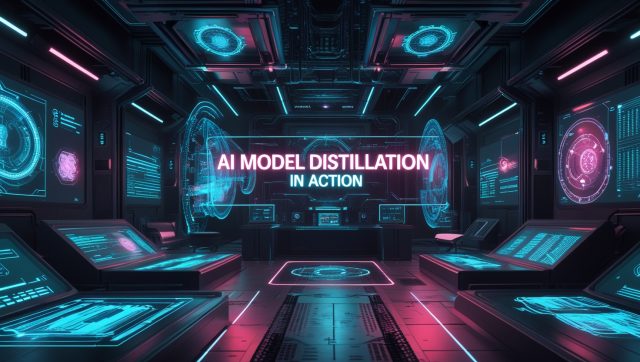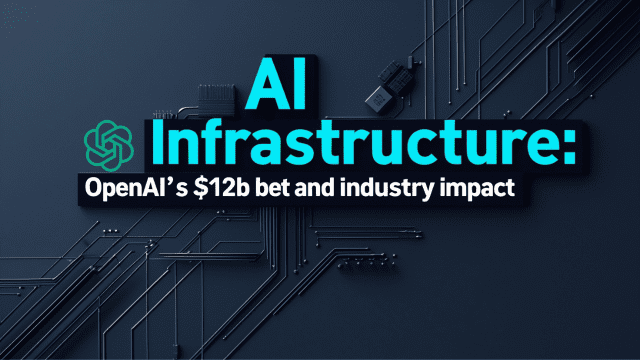Imagine standing on an offshore wind farm in the North Sea. While physical turbines harness wind energy, their digital twins—real-time virtual replicas—perform more critical work: predicting mechanical stress fractures months before failure, simulating performance under tomorrow’s storm conditions, and autonomously ordering replacement parts. This operational reality defines Industrial AI and Digital Twins—the convergence of artificial intelligence, IoT, and digital twins transforming how industries innovate, compete, and sustain operations.
Why This Convergence Matters Now
The stakes have never been higher. By 2030, the digital twin market will reach $125.7 billion, growing at 39.48% annually. Beyond financial projections lies a tectonic shift:
- Manufacturers report 30-60% productivity gains and 20% waste reduction using digital twins.
- Aerospace predictive accuracy reaches 99%, drastically reducing costly errors.
- Energy companies simulate grid failures preemptively, preventing blackouts affecting millions.
We’ve transitioned from static models to cognitive systems where digital shadows don’t just follow—they lead, predict, and prescribe. For insights into how AI-driven systems optimize industrial processes, explore how industrial AI agents slash energy costs in manufacturing.
1. Evolution: From Apollo-Era Prototypes to Cognitive Twins
NASA pioneered early digital twin concepts during the 1970 Apollo 13 crisis. Earth-based engineers used physical simulators to troubleshoot survival strategies after an oxygen tank explosion. Dr. Michael Grieves formally named the technology in 2002, but its potential remained limited until IoT sensors and AI unlocked real-time synchronization.
Five Stages of Digital Twin Maturity:
- Mirroring: Basic digital replica
- Monitoring: One-way data flow
- Simulation: “What-if” scenario testing
- Federation: Cross-system twin networks
- Autonomy: Self-optimizing systems
“By 2025, digital twins evolve into dynamic, predictive models powered by AI and real-time data.” — Technology Research Firm FirstIgnite
Modern systems operate at Stages 4-5. Siemens’ wind turbine twins, for example, federate weather data, material analytics, and market pricing to autonomously adjust output and maintenance schedules. Honeywell’s refinery twins ingest 14 million daily data points, predicting catalyst degradation to prevent $5M downtime events. Learn more about predictive systems in how AI boosts predictive maintenance ROI in 2025.
2. Industrial AI: The Central Nervous System
Raw data gains meaning through Industrial AI, transforming digital twins from passive mirrors into active oracles. Unlike generic AI, Industrial AI specializes in processing sensor data, physics-based modeling, and operational constraints unique to industrial environments.
AI’s Transformative Capabilities:
- Predictive Precision: Machine learning analyzes vibration patterns in factory robots, flagging anomalies 12 weeks before failure.
- Generative Optimization: Physics-informed AI simulates 200+ design variants in minutes (e.g., lighter aircraft parts matching original strength).
- Real-Time Adaptation: Computer vision twins in retail track customer dwell times, instantly adjusting digital promotions.
Case Study: Healthcare Transformation
Philips’ ICU twins increased bed turnover efficiency by 18% during COVID surges by modeling patient flow and resource allocation. Surgeons now rehearse complex tumor removals on patient-specific organ twins incorporating real blood flow data, reducing operative times by 25%. For advanced robotic applications in healthcare, see robotic surgery benefits in 2025.
3. Industry-Specific Transformations
Manufacturing: The Zero-Defect Frontier
Predictive Maintenance
LG Electronics’ digital twin predicts defects 10 minutes before occurrence, reducing returns by 70%. These systems leverage real-time IoT data to anticipate failures, minimizing costly downtime.
By integrating IoT sensors with AI analytics, manufacturers like LG achieve near-zero defect rates. According to INSIA, digital twins in 2025 reduce unplanned outages by up to 40%, ensuring seamless production.
Quality Control
Computer vision systems inspect products at 200 frames/second, spotting microscopic defects. HPE’s AI-driven visual analytics cut quality issues by 25% in European server production.
High-speed vision systems, paired with Industrial AI, ensure defect-free products. McKinsey & Company reports that AI-driven inspections improve yield rates by 20%, critical for competitive manufacturing.
Sustainable Operations
BMW uses human-robot collaboration twins to reduce ergonomic injuries by 45% while cutting material waste.
BMW’s twins optimize human-robot workflows, enhancing safety and eco-efficiency. For related advancements, check BMW’s humanoid robot precision manufacturing. Forbes highlights how digital twins cut waste by 15% across industries.
Energy: Self-Healing Grids
Failure Forecasting
European utilities avoid €140M outage costs by simulating storm impacts on digital grid replicas.
These twins predict grid vulnerabilities, ensuring uninterrupted power. Similar innovations are seen in autonomous wildfire drones, which protect energy infrastructure.
Renewable Optimization
Wind farm twins adjust blade angles using real-time turbulence simulations, boosting output by 15%.
Real-time adjustments maximize renewable energy yields, aligning with global sustainability goals.
Carbon Accounting
“Green twins” track emissions across supply chains, identifying reduction hotspots for compliance reporting.
These systems support ESG goals by providing transparent emissions data.
Healthcare: Personalized Medicine Revolution
Diabetes Management
Patient-specific glucose response twins reduced HbA1c levels by 22% through meal/drug/exercise modeling.
AI-driven twins personalize treatment, improving patient outcomes.
Surgical Rehearsal
Patient-specific organ twins with vascular mapping enable risk-free procedure practice.
Surgeons gain precision through virtual rehearsals, enhancing safety.
Table: Cross-Industry Impact of Industrial AI and Digital Twins
| Industry | Core Application | Validated Outcome |
|---|---|---|
| Manufacturing | Predictive Maintenance | 30-60% productivity gain |
| Healthcare | Surgical Simulation | 25% shorter operative times |
| Energy | Load Forecasting | 50-80% downtime reduction |
| Automotive | Design Validation | 40% faster model rollouts |
| Aerospace | Fleet Health Management | 15% lower maintenance costs |
4. Technology Stack: Building the Invisible Engine
Digital twins thrive on interconnected technologies forming a layered architecture:
a) IoT & 5G: The Neural Network
95% of IoT platforms will offer digital twinning by 2029. 5G’s <1ms latency enables real-time synchronization critical for autonomous vehicles and microsecond manufacturing adjustments.
5G-powered IoT ensures seamless data flow, vital for dynamic twins. Discover related IoT advancements in 7 industrial IoT sensors powering AI-driven manufacturing.
b) Edge Computing: Instant Reflexes
Local processing prevents cloud latency disasters. Virginia Tech’s research shows edge-processed data reduces response delays by 92% in factory robots.
Edge computing enables split-second decisions, critical for automation. See how edge AI vs. cloud AI optimizes industrial processes.
c) Physics-Informed AI: The Cognitive Core
Blends simulation accuracy with AI speed. Rolls-Royce uses this hybrid approach to reduce aircraft engine maintenance intervals by 50% while optimizing end-of-life part recycling.
This AI ensures reliable simulations, driving efficiency.
d) Blockchain: Trust Architecture
Tamper-proof transaction ledgers verify supply chain events. DHL’s logistics twin records container conditions at each transit point, resolving 89% of shipment disputes automatically.
Blockchain enhances trust in twin data, as seen in blockchain-verified reforestation.
“AI reduces simulation times from days to seconds. But without physics-based grounding, it’s digital hallucination.” — Frank Kaufmann, Ansys Automotive Director
5. Implementation Barriers: Navigating the Real-World Maze
Data Silos & Integration Chaos
Legacy systems create fragmented data environments. Solutions include:
- OpenUSD frameworks (adopted by NVIDIA, Apple) unifying 3D data.
- Adaptive APIs slowly integrating historical datasets into modern twins.
Energy Consumption Dilemma
AI twins require massive computing power. Mitigation strategies:
- Carbon-aware computing: Siemens schedules heavy simulations during renewable energy peaks.
- Edge efficiency: Local processing reduces data transmission loads by 60%.
Workforce Transformation
- AR-Upskilling: BMW technicians use augmented reality twins overlaying repair guides.
- Human-AI Collaboration: “Cobots” handle 73% of repetitive quality checks, freeing engineers for innovation.
Real-World Anecdote
Sarah, an Ohio plant manager, initially resisted digital twins. After creating a bottling line replica, the system predicted a conveyor failure three weeks preemptively. “We fixed it during a holiday shutdown. Previously, that failure would’ve caused a week of downtime,” she confirms.
6. Emerging Frontiers: The 2028 Horizon
a) Self-Optimizing Twins (2026-2027)
- Autonomous parts ordering via blockchain contracts.
- Real-time carbon credit trading during energy fluctuations.
b) Generative Twin Ecosystems
Singapore’s Virtual City models traffic, pollution, and emergency responses at metro-scale. NAPA’s maritime twins optimize shipping routes using live weather/swell data, cutting fuel use by 17%.
c) Human Digital Twins
- Employee Twins: Accenture tests AI replicas attending routine meetings.
- Regulatory Testing: FDA evaluates “virtual hearts” for drug trials, potentially replacing animal testing by 2027.
Table: Emerging Capabilities Timeline
| Timeline | Innovation | Potential Impact |
|---|---|---|
| 2025 | Hybrid physics-AI twins | 50% faster simulations |
| 2026 | Blockchain-secured supply chains | Tamper-proof material provenance |
| 2027 | Federated twin networks | Cross-industry resource optimization |
| 2028 | Agentic AI ecosystems | Self-governing industrial campuses |
7. Implementation Framework: Your Industrial AI Playbook
- Start Focused, Scale Fast: Begin with one high-impact asset (e.g., critical machinery). P&G launched twins at just 4 factories before global rollout.
- Prioritize Data Hygiene: Clean, labeled datasets outperform larger messy collections. Tesla’s Fremont plant cut quality issues 25% by refining sensor data inputs.
- Adopt Open Standards: Use frameworks like NVIDIA Omniverse for cross-platform interoperability.
- Measure Beyond Cost: Track carbon savings, innovation velocity, and supply chain resilience alongside ROI.
- Prepare for Agentic AI: Dell’s NativeEdge platform simplifies secure orchestration for autonomous twins.
For cutting-edge AI orchestration, explore agentic AI in supply chain management.
8. Ethical Considerations: Navigating the Uncharted
- Data Sovereignty: Who owns turbine performance data—manufacturers or operators? Clear contracts must define data rights.
- Algorithmic Bias: Healthcare twins trained on non-diverse datasets risk misdiagnosis. Regular audits are essential.
- Job Displacement: 34% of repetitive tasks will automate by 2027. Reskilling programs must precede deployment.
For ethical AI discussions, see AI ethics could save or sink us.
The Invisible Backbone of Modern Industry
Industrial AI and digital twins form the operational backbone of resilient, efficient enterprises. As Virginia Tech’s Walid Saad observes, we’re advancing toward an “internet of federated digital twins”—interconnected ecosystems anticipating disruptions and unlocking new innovation frontiers.
The 2025 competitive landscape favors organizations whose digital shadows run deepest and smartest. Companies like Siemens and Honeywell demonstrate that simulated certainty outperforms reactive guesswork. As Dell Technologies’ Todd Edmunds notes: “Where many drown in data, digital twins and AI know what to do with it.”
For sustainable applications, check why robotics is the secret weapon in the fight against climate change.
FAQ: Addressing Critical Questions
Can small manufacturers afford digital twins?
Yes. Cloud-based solutions like Azure IoT reduce entry costs. Start with single-machine twins demonstrating 6-12 month ROI.
How long until ROI emerges?
LG Electronics saw 70% defect reduction within one year. Focused deployments typically deliver ROI in 8-15 months.
What skills are essential?
Hybrid expertise in data science, systems engineering, and domain knowledge. Upskilling programs like Coursera’s digital twin certifications bridge gaps.
Are there cybersecurity risks?
Yes. Blockchain integration and hardware-secured modules (like Dell NativeEdge) mitigate threats.
Can digital twins reduce carbon emissions?
Absolutely. LG’s factory twins cut energy use 30%, while logistics optimization slashes fuel consumption.
Ready to explore further? Discover how Siemens’ digital twins cut downtime by 50% or dive into NVIDIA’s Omniverse for industrial AI. For AI avatar solutions, visit eSelf.ai.
Subscribe to our Newsletter for more Industrial AI series


